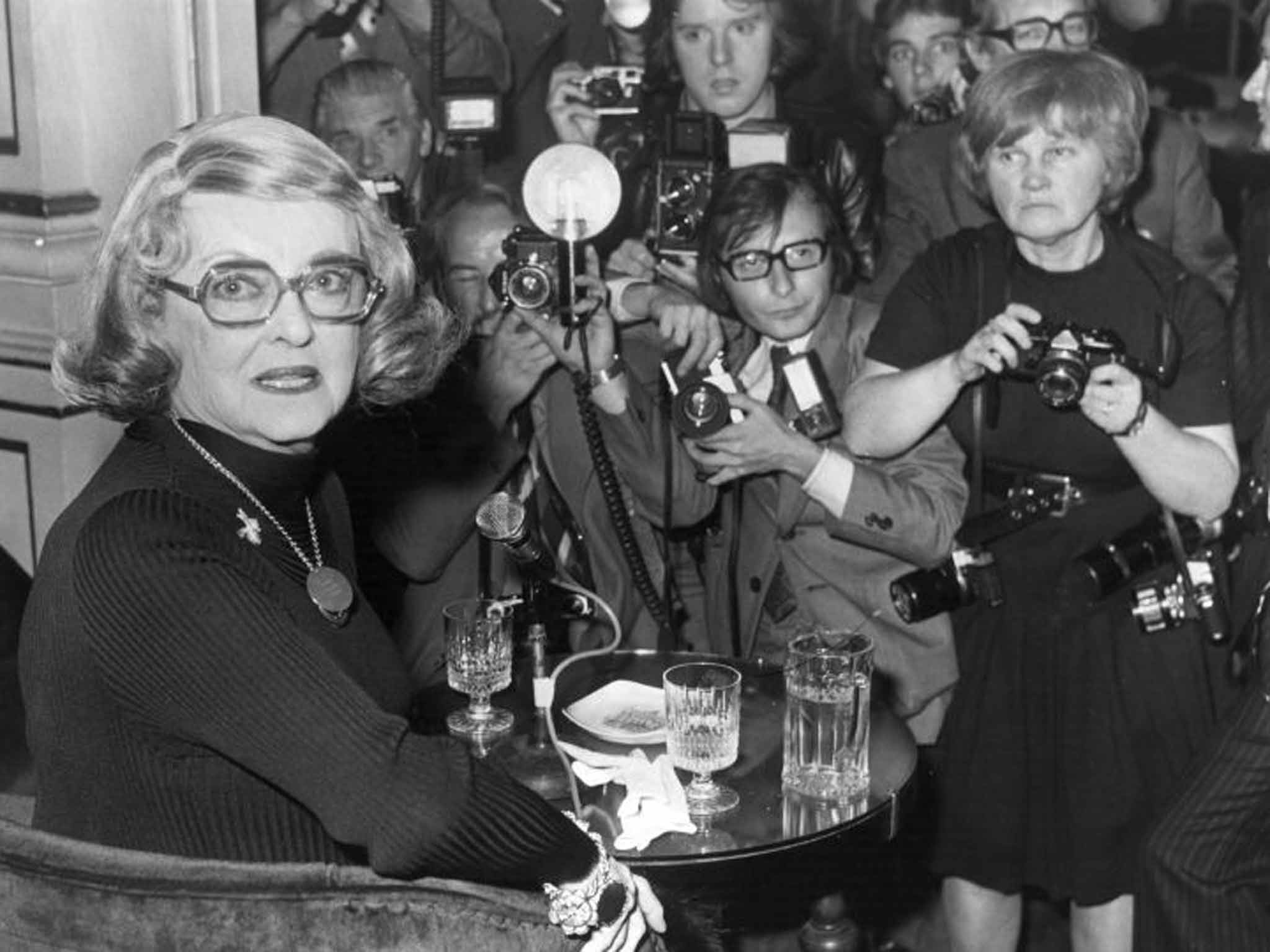Jane Bown: Photographer who joined 'The Observer' in 1949 and was hailed for her ability to get under her subjects' skin
Bown always shot in black and white, and used natural light. Having briefly tried colour during the 1960s, she found it 'noisy and distracting'.

Jane Bown was a photographer who captured portraits of thousands of famous and infamous figures in the worlds of the arts, politics and royalty. She was forever constrained by the clock and by the environments in which she was required to work. "I spent my whole life worrying about time and light", she once said. "If I had time it was something, but if I had light it was even better".
She was born in Dorset in 1925. Not knowing her father, she grew up living at the homes of her five aunts in Dorset and Devon. Aged 18 she joined the Women's Royal Naval Service (Wrens), working on mapping. "I fell into photography almost by accident," she recalled. "I was sitting with my fellow Wrens discussing what we would do when we left the service... someone said 'Why don't you try photography?' – so I did."
She studied at Guildford School of Art, which had just begun a full-time photography course, run by the "brilliant, gifted and inspirational" Ifor Thomas and his wife Joy. However, her profound shyness meant that she felt unable to join the mandatory group discussions, with the result that she did not graduate. The mantra that photographers should be "seen and not heard" remained a favourite throughout her life. After a brief period photographing weddings and taking portraits of children, Bown joined The Observer in 1949. She soon gained a reputation for her ability to work quickly, creating images which were not merely documentary but works of art in their own right.
She remembered an adventurous pitch in her early days at the paper" "I was 24 and had never been to France, so with the cheek of youth I put a proposition to The Observer. If they paid my expenses, I would go to Paris (not speaking a word of French) and photograph four people..." One of the resulting photographs, of the poet and artist Jean Cocteau, is a remarkable study, in which she has him framed in an arch, gazing directly at the camera.
Initially the favoured tool of her trade was the Rolleiflex, equipped with a Tessa lens. By 1964 she had graduated to a single lens reflex (SLR) camera, latterly working with her favourite, an Olympus OM1. For indoor work the settings would generally be the same, a relatively slow shutter speed (1/60 of a second) and a wide aperture (f2.8), giving a shallow depth of field.
Bown always shot in black and white, and used natural light. Having briefly tried colour during the 1960s, she found it "noisy and distracting" and said, "I prefer the simplicity and directness of black and white. It emphasises the underlying patterns of light and dark and confers a natural harmony on the subject."
Her first major exhibition was The Gentle Eye, at the National Portrait Gallery in 1980, showing 120 photographs. In the accompanying catalogue her colleague, the journalist Patrick O'Donovan, discusses their work together and her alchemical talent "...she must use the accidents of time and place as they are to manufacture her gold, whether it be the hang of a curtain, a face in a crowd, the dead give-away in the expression of a self-satisfied man." Among her best known work is a photograph of Samuel Beckett taken in 1976 which captures perfectly his gnarled face. It was the third of five frames.
Made a CBE in 1995, she requested the opportunity to photograph the Queen on her 80th birthday in 2006, seated in the blue drawing room. "I circled the chair, running off about three rolls," she recalled. "I like the shot of the Queen smiling gently as her lady-in-waiting came into the room...". The palace chose the more formal, head-on portrait for its collection.
Although her signature work is in portraiture, sometimes a lack of people can make a powerful photograph. In her After the Eviction, 29 March 1984, reproduced in How We Are – Photographing Britain (2007), we see hints of a human presence against a backdrop of barbed wire: an umbrella, a wooden pallet and containers of drinking water, symbols of the once thriving Greenham Common peace camp that had just been destroyed by police and bailiffs. The book observes how "Women photographers, so active in the interwar years, were noticeable by their absence in this new photographic landscape. Jane Bown, an Observer photojournalist, was an exception, and one of only a small number of women prominent in mainstream photographic production..."
In Faces – The Creative Process behind Great Portraits (2000) Bown describes the process of making a portrait (the former Observer editor, Donald Trelford, called her "a white witch" for her ability to get under her subjects' skin). "Time is a major constraint and I consider myself lucky if I get quarter of an hour. The people I'm sent to photograph are often celebrities, politicians or successful business people, with many demands on their time. I usually work in tandem with a writer and ... I have to fit the photography session around the interview."
The 2003 exhibition, Rock 1963-2003 at the National Portrait Gallery showed her portraits of rock musicians. Mick Jagger, photographed in 1977, is portrayed seated with legs apart, an open shirt, gazing thoughtfully into the distance. As Bown expert Luke Dodd remarked, "It was always about the picture, not about her."
Jane Bown: photographer; born Dorset 13 March 1925; married 1954 Martin Moss (died 2007; three children); MBE 1985, CBE 1995; died Hampshire 21 December 2014.
Subscribe to Independent Premium to bookmark this article
Want to bookmark your favourite articles and stories to read or reference later? Start your Independent Premium subscription today.

Join our commenting forum
Join thought-provoking conversations, follow other Independent readers and see their replies